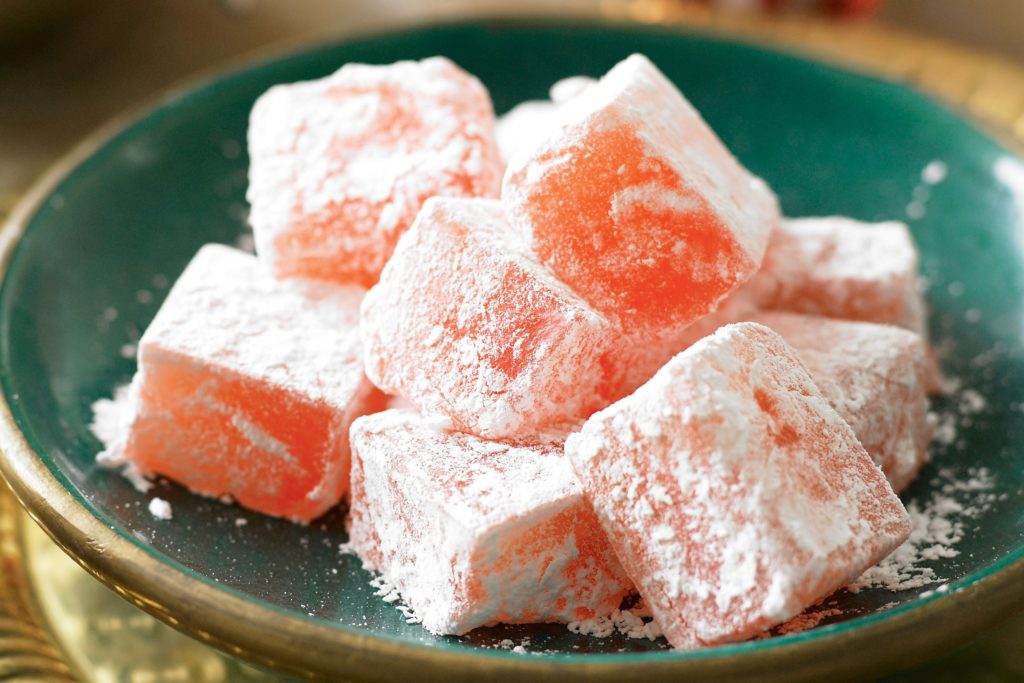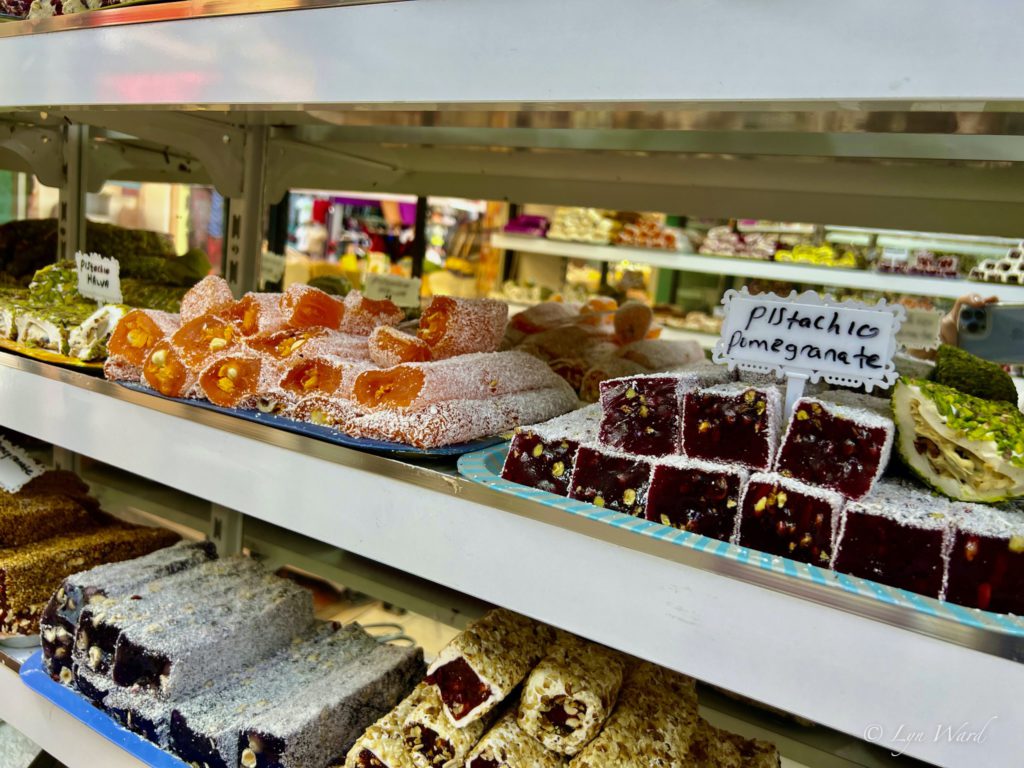“It is dull, Son of Adam, to drink without eating,” said the Queen presently. “What would you like best to eat?” “Turkish Delight, please, your Majesty,” said Edmund.”~ C.S. Lewis
Turkish delight or lokum is a family of deliciously sweet confections based on a gel of starch and sugar.
Until the arrival of refined sugar in the late 18th century, lokum meant an amalgam of honey or pekmez and wheat flour.
The creator of Turkish delight
In fact, it was more deserving of the name Turkish Glop than anything more alluring. But when confectioner Hacı Bekir got his hands on white sugar and cornflour, he began to have delightful dreams of a new lokum.
His smooth, translucent, jellied dreams turned into what we know today as Turkish Delight.

Such was Hacı’s fame and acclaim that he was soon appointed chief confectioner at Topkapı Palace.
The sweet came to international fame after a delighted British traveller took a sample back to Blighty, wowing his mates.
The quaint shop Hacı Bekir opened in 1777 has been restored and is still doing a roaring trade in sugary lovelies, now overseen by the fifth generation of the family. The original shop is on a small street behind the Yeni Cami (New Mosque) in Istanbul’s Bahçekapı district

Today, the Hacı Bekir business includes five stores within Istanbul, and they ship their famous Turkish delight to customers all over the world.
Read The secret story behind Turkish delight here
Sade lokum (plain Turkish delight) is just the beginning. It can be flavored in a number of ways, often with nuts, citrus fruits, and/or rose water. The most common is probably the pink-colored rose-flavored lokum, but other popular varieties use pistachios and walnuts.
Have a go at making it yourself with this recipe from Ozlem’s Turkish Table
Source: World Food Turkey








